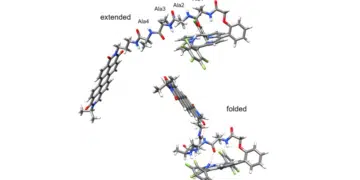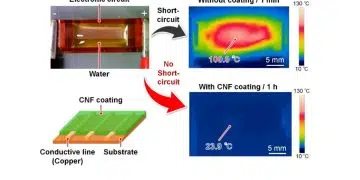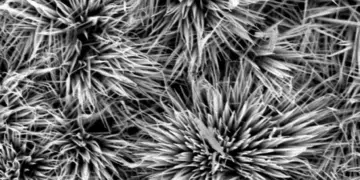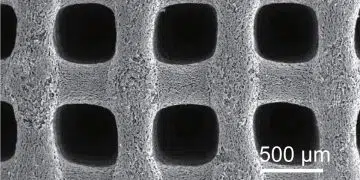New Technologies
A Machine Learning Degradation Model for Supercapacitors Operated at High Temperature
Team of researchers from UK, The Netherlands, Germany and USA led by Heriot-Watt University, Edinburgh, UK investigated behavior of electrochemical...
Read moreDetailsResearchers Developed Wood-Derived Insulating Dielectric Ink and Demonstrated Fully Recyclable Printed Electronics
Engineers at Duke University have developed the world’s first fully recyclable printed electronics. By demonstrating a crucial and relatively complex...
Read moreDetailsNew Conductive Polymer Ink Opens for Next-Generation Printed Electronics
Researchers at Linköping University, Sweden, have developed a stable high-conductivity polymer ink. The advance paves the way for innovative printed...
Read moreDetailsPicosecond Electron Transfer in Peptides Can Help Energy Transfer and Storage Technologies
Biological energy flows, such as in photosynthesis and respiration, depend on the transfer of electrons from one molecule to another....
Read moreDetailsControlled Non-Linearity of Graphene May Yield in New Generation of High Frequency Electronic Components
How can large amounts of data be transferred or processed as quickly as possible? One key to this could be...
Read moreDetailsResearchers Developed Sustainable Nanocarbon Material Made from Crab Shells for Supercapacitor Electrodes
Researchers from Osaka University report a sustainable nanocarbon material made from crab shells that are suitable for use in photosensing...
Read moreDetailsCellulose Nanofiber Coatings on Cu Electrodes Protection against Humidity Water-Induced Short-Circuit Failures
Researchers from Osaka University developed a cellulose nanofiber coating that counters bending damage, retains electrode function underwater, and thus offers...
Read moreDetailsSustainable Low Cost Powerful Micro-Supercapacitor May be on the Horizon
A sustainable, powerful micro-supercapacitor may be on the horizon, thanks to an international collaboration of researchers from Penn State and...
Read moreDetailsPorous, Ultra-Low Temperature Supercapacitors Could Power Mars, Polar Missions
Maintaining fast charging capability at low temperatures represents a significant challenge for supercapacitors. The performance of conventional porous carbon electrodes...
Read moreDetailsSmoltek Demonstrates the World’s Thinnest Capacitor
Smoltek has developed the world's thinnest capacitor. The company is now demonstrating practically what it has previously claimed by producing...
Read moreDetails






























